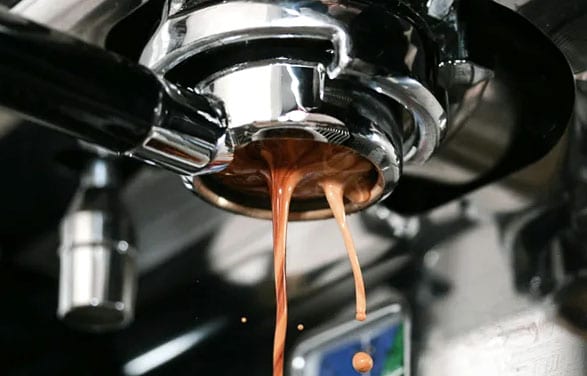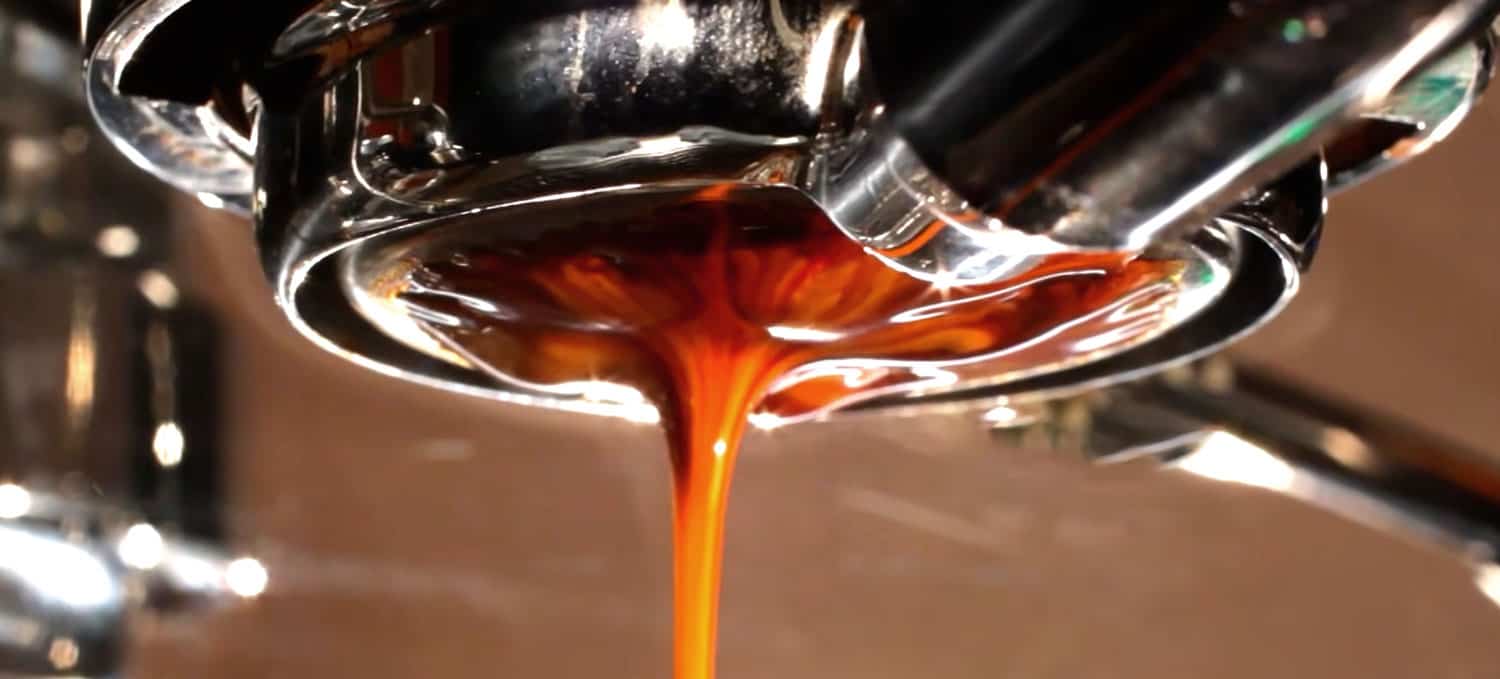Do You Need to Use a Bottomless Portafilter? Weighing the Pros & Cons of Naked Espresso Brewing
Recently, a friend who is just starting out to make espresso coffee asked me why I opt for the naked (aka bottomless) portafilter, rather than the spouted ones. After giving a brief answer, I knew I also have to share with my readers the benefits of this portafilter type.
In this article, I’ll dive into bottomless portafilters and discuss the pros and cons of using one. After reading through, you can then make an informed decision on whether you should also go for the naked portafilter or its spouted counterpart.
Let’s get right into it.
What is a Bottomless Portafilter?
You probably know that the portafilter holds the basket where your coffee puck sits, so it plays a huge role in your espresso machine’s extraction process. The regular portafilter has a single or double spout that funnels the espresso straight into a cup or two respectively.
An alternative to this common portafilter type is the bottomless or naked portafilter. As its name suggests, a bottomless portafilter has no bottom side where the spouts would be, thus allowing the brewed espresso to flow freely from your filter basket straight into your cup.
So instead of a concentrated stream falling down from a tiny hole into your cup, you see how the extracted espresso envelops the bottom of the basket and drips down from (hopefully) the middle – it’s such a marvelous sight if you ask me. Aside from the visual appeal though, it has some real benefits for the barista which I’ll be discussing next.
If you want to learn more about the different portafilters and baskets for your espresso machine, click here to read my in-depth guide on the subject.
5 Benefits of Using Bottomless Portafilters
A bottomless portafilter is a popular choice among baristas and for good reason.
There are some glaring advantages to using this type of portafilter:
1. Enhanced Visual Feedback for Troubleshooting
The biggest benefit of using a bottomless portafilter is that it allows you to see every little detail in the espresso flowing out. This means you can monitor the extraction process closely, recognize any issues that may have taken place during extraction, and adjust the variables accordingly, whether it’s your:
- dose,
- grind size,
- tamp technique, or
- brew time.
For example, whenever I see any gaps or multiple streams in my espresso flow, I know there’s probably some channeling (uneven water flow) present. Right away, I know I could troubleshoot my next shot with some better tamping, pre-infusion, or a puck screen.

While you can judge a good shot or identify its flaws just by looking at the final cup and tasting your espresso, a bottomless portafilter can help you diagnose your brew even more accurately.
2. Improved Crema Formation
Another advantage to letting your espresso flow freely is that it can produce a richer and more vibrant crema. Without the spout interfering with the transfer of the espresso from the basket to the cup, the tiny bubbles of that intense foam will arrive in your cup undisturbed.
As a result, the smoother extraction of espresso crema also yields a more beautiful cup of coffee.

3. Warmer shot
We’re all guilty of not pre-heating our portafilter at times. I know I am, sometimes I just forget to do it. Especially when the kids wake up way too early 🙂
But with a naked portafilter, the shot comes into contact with fewer surfaces, so your espresso will arrive in your cup at a higher temperature. This is nice, since espresso cools down very quickly, simply because it’s a low-volume drink. I have an article on what is the best serving temperature of coffee if you’re interested.
4. Easier to Clean and Take Out
You can also clean a bottomless portafilter like a breeze because compared to its spouted counterpart, you don’t have a bottom part to clean, and the spouts do not get stained with coffee oils. You only need to clean the basket, which you can easily push out of the portafilter.
A spouted portafilter can be a pain to clean because the small pathways can easily carry coffee buildup if left unchecked.
5. More cup clearance
When you’re using a scale to measure the yield of your espresso, the spouts on a traditional portafilter can sometimes get in the way.
But not with a naked portafilter.
Drawbacks of Using a Bottomless Portafilter + Solutions
The benefits of using bottomless portafilters could really help you get that perfect shot of espresso. However, these tools aren’t perfect and there are also some disadvantages to using them.
- For one, a bottomless portafilter can be messier when pulling your caffeine-rich espresso shot. As you might expect, the lack of a spout that controls your coffee stream could contribute to unwanted splashes in different directions, especially if you have intense channeling.
Solution: The best way to minimize the mess is to avoid channeling in your espresso. This can be avoided by improving your tamping or with the help of a few accessories such as puck screens and a Weiss Distribution Technique (WDT) tool. - The second problem with a naked portafilter is splitting your double shot doppio apart into 2 demitasses.
Solution: The only real solution here is either you pull 2 shots of espresso separately or use a spouted portafilter. I don’t recommend splitting a double shot after extraction as it would just ruin the crema.
So as you now know, the bottomless portafilter offers multiple benefits, but also some drawbacks.
Personally, I think the benefits outweigh the drawbacks and so I highly recommend that you invest in a bottomless portafilter. So give it a try and judge how it improves your espresso shots.
If you make sure to follow proper puck preparation “protocols”, the result might just surprise you.







